Astrologers typically speak of planetary positions from the geocentric perspective too. There may be some significance to these geocentric alignments (as the Spanish earthquake may indicate), but in this article I'm going to focus on heliocentric, or Sun centered, alignments. Now why are any of these planetary alignments important, you ask? Are we going to start giving astrology reports on SOTT? Well, no, but for this article it might seem like it. The thing is, these planetary alignments do cast light upon the changes taking place on the Big Blue Marble. Hopefully this article will elucidate some of how this process works; there's obviously a lot that we still don't understand.
Since the start of this year, we've mentioned James McCanney's Solar Capacitor Theory in several SOTT articles. Despite the fact that McCanney tends to get carried away with his claims, his early astronomy work - which includes his Solar Capacitor Theory - still has merit, we think. There are actually a couple big dots that relate to McCanney's Solar Capacitor Theory which I think are connectible and worthy of exploration. The first dot has to do with an article published by NASA back in 2007 relating to the Northern Lights:
NASA Spacecraft Make New Discoveries about Northern LightsThere are a few interesting points here. First of all, they put forth the concept of "magnetic ropes." As Michael Goodspeed of thunderbolts.info points out, you can't have a magnetic field without an electric current. The term "magnetic rope" reveals a deep confusion on the part of astronomers. Magnetic fields by themselves cannot have a beginning and end, but those induced from electric current can. In other words, "magnetic ropes" don't just form out of nothing; they suggest a vortex of moving electric charge - in this case between the Earth and the Sun.
Dec. 11, 2007: NASA's fleet of THEMIS spacecraft, launched less than 8 months ago, has made three important discoveries about spectacular eruptions of Northern Lights called "substorms" and the source of their power. The discoveries include giant magnetic ropes that connect Earth's upper atmosphere to the Sun and explosions in the outskirts of Earth's magnetic field.
[...]
The discoveries began in March less than a month after the five THEMIS satellites had been activated. "On March 23, 2007, a substorm erupted over Alaska and Canada producing vivid auroras for more than two hours." A network of ground cameras organized to support THEMIS photographed the display from below while the satellites measured particles and fields from above.
[...]
Scientists have been tracking and studying substorms for more than a century, yet these phenomena remained mostly unknown until THEMIS went into action.
Even more impressive was the substorm's power. Angelopoulos estimates the total energy of the two-hour event at five hundred thousand billion (5 x 1014) Joules. That's approximately equivalent to the energy of a magnitude 5.5 earthquake.
Where does all that energy come from? THEMIS may have found an answer:
"The satellites have found evidence for magnetic ropes connecting Earth's upper atmosphere directly to the Sun," says Dave Sibeck, project scientist for the mission at the Goddard Space Flight Center. "We believe that solar wind particles flow in along these ropes, providing energy for geomagnetic storms and auroras."
A "magnetic rope" is a twisted bundle of magnetic fields organized much like the twisted hemp of a mariner's rope. Spacecraft have detected hints of these ropes before, but a single spacecraft is insufficient to map their 3D structure. THEMIS's five satellites were able to perform the feat.
[...]
"THEMIS encountered its first magnetic rope on May 20, 2007," says Sibeck. "It was very large, about as wide as Earth, and located approximately 40,000 miles above Earth's surface in a region called the magnetopause." The magnetopause is where the solar wind and Earth's magnetic field meet and push against one another like sumo wrestlers locked in combat. There, the rope formed and unraveled in just a few minutes, providing a brief but significant conduit for solar wind energy. Other ropes quickly followed: "They seem to occur all the time," says Sibeck.
THEMIS has also observed a number of relatively small explosions in Earth's magnetic bow shock. "The bow shock is like the bow wave in front of a boat," explains Sibeck. "It is where the solar wind first feels the effects of Earth's magnetic field." When a knot of magnetism within the solar wind hits the bow shock--"Bang!" he says. "We get an explosion."
The technical term for these explosions is "hot flow anomalies" or HFAs. HFAs boost the temperature of solar wind particles ten-fold (as high as 10 million degrees) and they can stop the solar wind dead its tracks. "This is no mean achievement considering the fact that the solar wind moves at supersonic speeds near a million miles per hour."
[...]
"Hot flow anomalies may not play a major role in energizing auroral substorms--they happen too infrequently, less than once a day," notes Jonathan Eastwood of the University of California, Berkeley, who is studying them. "Nevertheless they are of interest. This is a fundamental physical process that accelerates particles to high energies and we are delighted to be able to study it."
Powerful substorms, giant magnetic ropes, explosions that stop the solar wind in its tracks: "We have much more to learn about all these things," says Angelopoulos. "I can't wait to see what comes next."
Now McCanney discusses the sunward spike of comets in a similar way and posits that these visible spikes are due to electric charge moving from the Sun towards the comet. This sounds like another example of "magnetic ropes" to me, but McCanney refers to it as "discharging the Solar Capacitor." And likely all planets discharge the Solar Capacitor or remain connected via magnetic ropes (pick your favorite), but comets appear to be a much more visible display of this process.
It's not just magnetic ropes connecting the planets, comets, and other large objects to the Sun, there's also what occurs in the opposite direction too. Comets have an obvious plasma 'tail', and planets have a plasma 'tail' too, it's just that in the planet's case the 'tail' is invisible. Every planet has what is referred to as a magnetotail. According to Wikipedia:
A magnetic tail or magnetotail is formed by pressure from the solar wind on a planet's magnetosphere. The magnetotail can extend great distances away from its originating planet. Earth's magnetic tail extends at least 200 Earth radii in the anti-sunward direction well beyond the orbit of the Moon at about 60 Earth radii, while Jupiter's magnetic tail extends beyond the orbit of Saturn. On occasion Saturn is immersed inside the Jovian magnetosphere.So these magnetotails have the potential to extend from planet to planet, and perhaps with more sensitive detection abilities we'd see them extend even further.
Scientists studying Jupiter's magnetotail made some surprising discoveries during their research. They discovered plasmoid bubbles traveling through Jupiter's magnetotail in the direction of the solar wind. They also discovered that unlike Earth's magnetotail, Jupiter's is surprisingly structured with clear boundaries consisting of differing plasma density. They also noted intermittent extensions of Earth's magnetotail where it would suddenly jump out to around 1000 Earth radii, extending much further than what the above Wikipedia quote describes. There's clearly some interesting things going on behind the planets as they travel around the Sun.
So if we combine the magnetic ropes with the magnetotail, it appears that planets and comets are like electrical conduits for moving charge from the Sun to the outer-reaches of the Solar System - an electrical pathway, or wire, of sorts. Remember, according to the NASA article, these magnetic ropes are responsible for delivering the energy displayed during geomagnetic activity, which can sometimes equal the power of an earthquake. (Note to readers: this may be more than an analogy.)
The next noteworthy point in this NASA article is the description of these small explosions or "high flow anomalies" (HFA) witnessed in the magnetic bow shock when the solar wind hits. As Goodspeed so diligently points out, these 'explosions' are actually electrical discharge events between separated layers of charge (think 'capacitor' again). The quote by Johnathan Eastwood in the NASA article states that, "this is a fundamental physical process that accelerates particles to high energy." And what do high energy particles imply? Well, cosmic rays for one thing. This actually leads us to an interesting tangent.
Recently SOTT carried an article on cosmic rays that described their effect on Earth climate. There seems to be some serious theorizing going on about how these cosmic rays may impact global climate:
According to Svensmark, cosmic rays seed low-lying clouds that reflect some of the Sun's radiation back into space, and the number of cosmic rays reaching the Earth is dependent on the strength of the solar magnetic field. When this magnetic field is stronger (as evidenced by larger numbers of sunspots), more of the rays are deflected, fewer clouds are formed and so the Earth heats up; whereas when the field is weaker, the Earth cools down.Many experts agree that cosmic rays come to us from sources such as supernovas, black holes, and 'active galactic nuclei'. Supernovas can act as giant particle accelerators, sending high-energy particles flying throughout the galaxy. The Sun is a source of some high energy particles too, and there might be other processes at work as well (like the HFAs mentioned). The main point in understanding Svensmark's theory of how cosmic rays affect Earth's climate is that the Sun's magnetic field controls the influx of cosmic rays striking the Earth. The stronger the Sun's magnetic field, the fewer cosmic rays reach us and thus the warmer the Earth gets and vice versa. Cosmic rays seed clouds, which cool the oceans, which in turn lower global temperature - or so the theory goes. (Makes you wonder what will happen as the 'supernova factory' from the nearby Crab Nebula heats up? Ice age, anyone?) Actually, the book The Chilling Stars by Svensmark and Calder does a good job explaining this theory in layman's terms. There are probably many other processes that affect Earth climate too, such as atmospheric dust loading and such. A full treatment of this topic is beyond the scope of this article.
As mentioned in the quote above, an important point to consider is that the Sun's magnetic field strength is directly related to the sunspot count. The more sunspots, the stronger the Sun's magnetic field. In a way, this explains why the Maunder Minimum (a dearth of sunspots from the years 1645 to 1715) coincided with a 'little ice age' in Europe and North America. Despite what may be longer-period sunspot cycles, sunspot numbers generally oscillate over a period of 11 years (the 11-year sunspot cycle). But what, exactly, causes this 11 year sunspot cycle anyways? It's referenced in enough places that you'd think scientists would have figured out this riddle by now. Many scientists are stuck on the notion that sunspots and their cycle have something to do with the internal workings of the Sun. What I suspect, as I'll explain below, is that this sunspot cycle has little to do with processes internal to the Sun, and mostly corresponds to the position of the planets.

Well, it turns out there were some notable things going on in the Solar System from an astrological point of view. On March 22nd, Mercury entered into conjunction with (or directly in front of) Jupiter. Then on March 24th Mercury was square (meaning at 90 degrees) with Uranus, meaning that Jupiter and Uranus were within 6 degrees square with each other. At the same time Earth and Venus were within five days of being square too. Mercury was also two days away from its aphelion, or its furthest orbital point from the Sun. Now, such planetary alignments are not uncommon, but if one looks back over the history of severe solar storms, they show up time and time again.
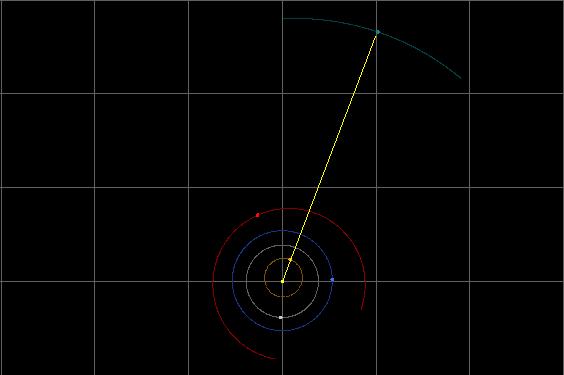
There are actually a lot of interesting correlations between this 11 year sunspot cycle, weather patterns, economics, wars, and a whole range of phenomena that are seemingly unrelated. Just think of wars for a moment. It appears that major wars or battles typically begin either when sunspot activity is increasing or decreasing. Of course, it doesn't happen that every increase or decrease in sunspots brings about a major war, but wars are more likely to occur during these times. How is it that waxing and waning solar activity can have an effect on the social mechanisms that lead to war? As mentioned, this is just one of the strange ways in which human and solar activity are synchronized. The interested reader might want to check out this website for more information on these cycles and how they relate to the planets.
Now, scientists aren't completely clueless about the Jupiter/Saturn effect, but so far I've only seen discussion of 'tidal forces' between the planets as being responsible for the increase in sunspots; nothing related to electromagnetic connections. But given the connection (no pun intended) between "magnetic ropes" and geomagnetic activity, as referenced in the NASA article above, it might make sense to consider these Sun-planet connections as two-way circuits. In other words, as these magnetic ropes influence the geomagnetic activity of a planet, the combined affect of these ropes on the Sun might stir up solar activity as well. It actually makes for a pretty interesting feedback loop when you think about it. Picture it like a planetary game of tug-of-war with the planets twisting and turning the Sun's magnetic field. Remember the analogy relating a planet to a moving wire? Well, we might also speculate that when a planet in the inner Solar System lines up with an outer planet (i.e. when their 'wires' connect), there's a greater potential to "discharge the Solar Capacitor," in McCanney terms, and thus bring a higher likelihood of sunspots, flares, CMEs, etc. Thinking of the Solar System as an elaborate electrical circuit might be a useful analogy to consider.
Now, with that in mind, consider this solar storm on March 23rd 2007. There were several notable alignments as I mentioned. Mercury was lined up with Jupiter, which probably got the whole discharge process started, and the other alignments just contributed to the discharging effect. Since all the planets are connected to the Sun, this means that when the Sun begins to discharge, all planets, including Earth, receive a jolt, or some disruption in their normal electromagnetic connection with the Sun. It might also be that those planets involved in the direct alignments are affected differently or more intensely than the others. In any case, this is why we experienced a good deal of geomagnetic activity on this day in March.
Now, if we try to generalize this discharge process, it seems that the Solar Capacitor has a greater probability of discharging when certain 'hard' alignments (meaning 180, 90 or 0 degrees) exist between the inner and outer planets. Like the wire analogy, think of it like turning on a switch in an electric circuit. This is why a Jupiter-Saturn alignment brings out a lot of solar activity and creates this 11-year sunspot cycle. As these two giants get closer to each other, the faster-moving inner planets 'flip the switches' in rapid succession, causing a lot of solar discharge activity to occur. When the line of an inner planet connects with the line of an outer planet, this moves electric current from the Sun to the outer reaches of the Solar system, and gives each planet an 'electric shock' in the process. Sound reasonable?
Adventures in Shortwave Radio Research
The work of John H. Nelson is the second big dot to connect in understanding this process of how planetary alignments relate to solar activity and thus geomagnetic activity on Earth. Nelson was a shortwave radio researcher who worked for RCA (Radio Corporation of America) during the 1950s and 60s. He was tasked with finding a way to predict days when shortwave signals would be disrupted. (Remember this was before satellite communication, so there was a certain interest in maintaining these radio connections between the continents.) Even at this point, scientists had noticed the link between sunspot activity and the geomagnetic activity that affected shortwave radio transmissions, but they had no accurate means to predict when solar activity was likely to break out. Nelson studied the sunspot patterns for a number of years until he grew frustrated by his lack of progress in making long-range predictions.
Nelson then began to look at past solar storms where radio transmissions were wiped out for several days, hoping to find some sort of reoccurring pattern that might explain why these days, and not others, were special. On a whim, he decided to test an idea about the position of the planets, and used the date March 23rd 1940, the date of a significant geomagnetic storm, for his initial test date. He looked up the positions of the planets for this particular day and to his surprise noticed something very interesting.
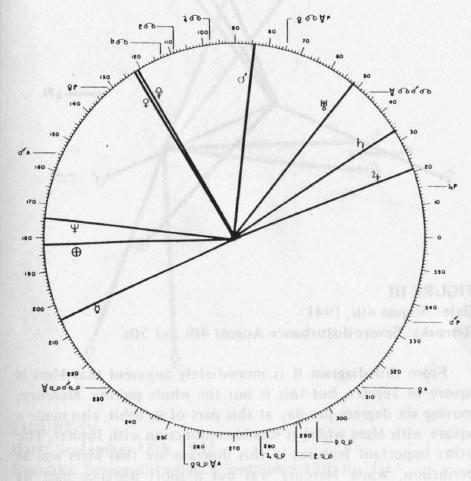
Nelson discovered that solar activity was more likely to occur during some conjunction, opposition or square between an inner and outer planet which he referred to as 'hard' angles. This was usually the initiating factor in the solar storms he observed and predicted. He also noted that other harmonics of these 'hard' angles served to increase solar activity as well. By 'harmonic' I mean taking 180 degrees and dividing it by integers. So angles like 180/2 = 90, 180/3 = 60, 180/4 = 45, 180/5 = 36 and so on... Even multiples of these harmonics such as 75 degrees (15 x 5) or 135 (45 x 3) and others could play a role too. Why harmonics were important to this process is unclear and probably something Nelson was hoping future research would shed light on, but nonetheless these were the observations he made.
He noticed that in the absence of any 'hard' angles, the trine angles (120 and 240 degrees) tended to stabilize solar activity, making good days for shortwave transmissions. The trine configuration of Saturn and Jupiter was especially significant in this regard. But he also noted that if a trine angle corresponded with a 'hard' angle between an inner and outer planet on the same day, it would usually magnify solar activity.
Nelson discovered that when multiple planets fell into harmonic relations this seemed to add to the solar activity initiated by a 'hard' angle. But these harmonics by themselves, without a 'hard' angle, usually did nothing. Likewise, a hard angle by itself without any added harmonics usually did nothing as well. Nelson also discovered that a planet's ascending and descending nodes played a role in setting up solar storms too. From his book Cosmic Patterns he writes:
The major storms analyzed in the following discussions will often contain more than one hard angle and numerous harmonics. Sometimes several hard angles with their associated harmonics follow one another in quite rapid succession, resulting in major storms, some of which can be prolonged for this reason.Here's an example of one prediction he made for a severe solar storm that occurred on August 30, 1960. This planetary arrangement involves all nine planets at harmonic angles to each other.
The planet Mercury is of major importance. One would expect this since it is the closest planet to the sun and has the greatest orbital velocity. (It also has considerable gravitational effects when at perihelion, however I do not wish to get into the area of gravitation since my prime interest is in angles.) I think it is safe to say that in at least 90 percent of the cases Mercury is the trigger planet. The planets slower than Mercury can be all set up on a major pattern but a storm usually does not begin until Mercury moves into a hard angle with one of them, or as a harmonic to two that are already associated in a hard angle.
Simple, uncontaminated conjunctions, squares, and oppositions involving only two planets can usually be ignored. Simultaneous multiple harmonics are the key. There are so many hard angles made by Mercury and Venus because of their velocity that, if every hard angle presaged a storm, shortwave radio would have a very difficult time surviving.
Another rule is that the intensity of a storm will be greater if a planet making a hard angle is at, or close to, either its nodal point or perihelion point in space.
[...]
At perihelion a planet is at that point in its orbit which brings it closest to the sun. Nodes are the places in a planet's orbit at which it crosses the plane of the Earth's orbit which means, of course, that the planet is crossing the ecliptic. There are two nodes, known as the ascending node, the point at which the planet crosses from below the ecliptic to above the ecliptic, and the descending node (180 degrees away), at which point the planet crosses from above to below the ecliptic. My research throughout the years has shown that these points in space are very important in this work.
The research relating to the nodes has revealed that the point halfway between the nodes is also a very sensitive area in space - apparently as important as the nodes themselves. At this point in space the planet pauses for an instant in the motion that is taking it away from the ecliptic, and then starts back again towards the ecliptic. Perhaps in doing this it creates a torque in the magnetic field of the sun. This can be demonstrated by dragging a canoe paddle through still water, then suddenly reversing the paddle; an eddy is created in the water. Could the same thing take place in the sun's outer atmosphere?
This is a remarkable example of a very strong simultaneous multiple harmonic involving several planets. An examination of this diagram shows us that Mercury was in conjunction with Pluto at the same time that it was in opposition to Earth and harmonically related to Mars and Jupiter, being 120 degrees ahead of Mars and 120 degrees behind Jupiter. This of course placed the Earth also in a strong harmonic relation, since it was 180 degrees from Mercury and Pluto. Mercury also made a 45 degree angle with Venus, a 60 degree angle with Neptune, and a 15 degree angle with Uranus. At the beginning of the storm, Mercury also made a 135 degree contact with Saturn. All nine planets in the solar system were involved in this arrangement. Shortwave signals were completely blacked out during the night of the 30th.The nice thing about Nelson's findings is that all of these factors are predictable and can be calculated far into the future. This suggests that it may be possible to predict solar storms via computer algorithms. In fact, I discovered one ham radio enthusiast who attempted to use part of Nelson's Theory in his own computer program to calculate a 'Nelson index' for each day. It's a crude attempt, and it doesn't take into account all of the factors the Nelson discovered, but it seems that he did have some preliminary success at accounting for past solar activity. Nelson believed his method brought about a 85% success rate in predicting future solar storms.
This storm was predicted officially on July 19th with the statement that a·complete blackout would take place on August 30th.
Despite Nelson's many successes at predicting solar storms, which he mentions in his book, there do seem to be some factors missing from his work. I think it would be worthwhile to consider some of James McCanney's ideas in light of Nelson's discoveries. The first missing factor is the influence of the Moon and how it interacts with the Earth-Sun connection. According to McCanney, when the Moon passes in front of the Earth (during a New Moon), there's a build-up of charge which then gets dumped into the ionosphere after the Moon passes. McCanney points out that the chance for hurricanes and cyclones greatly increases just after the passing of a New Moon. (Yes, cyclone-type storms like tornadoes and hurricanes are likely electric phenomena.) The Moon by itself may have little influence over solar activity compared to the planets, but it seems to have quite an effect on Earth.
The other factor missing from Nelson's work is comets. Should we factor alignments of comets in with the rest of the planets? To me this seems like a no-brainer since some comets can actually be the size of moons or planets, not to mention the fact that comets appear to be much more electrically active too. McCanney mentions several examples of comet alignments and their effect on Earth in his book Planet-X, Comets and Earth Changes. It seems that comets don't need to directly impact the Earth to create 'changes' in our environment.
We recently passed through an alignment with Comet Elenin around March 15th. There was also massive solar and geomagnetic activity around this time along with a major earthquake in Japan and earthquakes elsewhere too. Comet Elenin came into alignment with Mars towards the end of April, and this month turned out to be one of the most active months for tornadoes in US history. There does seem to be a strong correlation between solar activity, severe weather, earthquakes, and volcanoes; and it appears that planet (and comet) positions play a large role in setting up this solar activity. Further data and research is obviously needed to draw any definite conclusions, but this seems to be a good working hypothesis for the moment.
One wonders if alignments with first magnitude stars or large cosmic radio sources might have certain effects as well. Perhaps once we understand the impact of these nearby influences we'll be able to understand the finer influences received from the cosmos too.
Now, here's where I step out on a limb.
I already mentioned in the beginning that I've been staring at Ephemeris and orbital charts, and couldn't help but notice a few things:
Around June 2nd, Mercury and Venus are set to conjunct with Jupiter. (Like Nelson states, Mercury is often the trigger for major solar storms.) Along with this, Mercury should also be opposing Saturn around this same time. Mars has already passed through conjunction with Jupiter, giving us the appearance of Mercury, Venus, Mars and Jupiter all lining up on an orbital chart (see above).
Just a reminder to all those astrologists out there, these are heliocentric conjunctions and oppositions, not the geocentric ones you're used to seeing.
As far as harmonics go, Mars will actually be at about 7.5 (24th harmonic) degrees from Jupiter on June 2nd. Uranus will be at about a 20 degree angle to Jupiter (9th harmonic). Mars and Saturn will also be at about 165 degrees (11 x 15 - 12th harmonic) from Uranus during this time. Mars should also be at 60 degrees (3rd harmonic) from Neptune.
As far as nodes go, Mercury's ascending node is set for June 7th and Venus' descending node will occur on June 6th, both within close proximity to the June 2nd date.
Let's not forget about our friend Comet Elenin too, which looks to be opposing Mercury on May 31st, right about now.
Plus, as a wildcard, we have a really neat midnight solar eclipse happening on June 2nd as well.
Now, just as a disclaimer: I don't want people to think they should be stocking up on bottled water and heading to the hills here. These factors predict solar activity, and civilization has lived through many solar storms in its long history. This prediction is only in the interest of science. Even if nothing happens, we can still learn from this one instance and further refine or refute our working hypothesis. That's the beauty of science; it's not about making sensational claims of improbable events, it's about gathering knowledge, seeing where that leads, then gathering more knowledge and so on. In short, it's about connecting dots. There's still a lot we don't know about how planetary alignments affect solar activity and how this relates to Earth Changes, so we can't say anything for certain. It would be foolish to jump to any conclusions at this point, but also foolish to ignore these connections entirely, I think.
So what will the time around June 2nd have in store for us? At the very least we might expect a bit of solar activity, maybe some pretty northern lights. Whether this materializes into any Earth changing events like earthquakes, volcanoes, large storms, or even Fortean activity, we cannot say at this point. We've certainly seen a fair share of all these things recently, so it may just be a continuation of the same. About all we can say is that the probability for such events around this time may be higher. As always, we'll have to "wait and see."
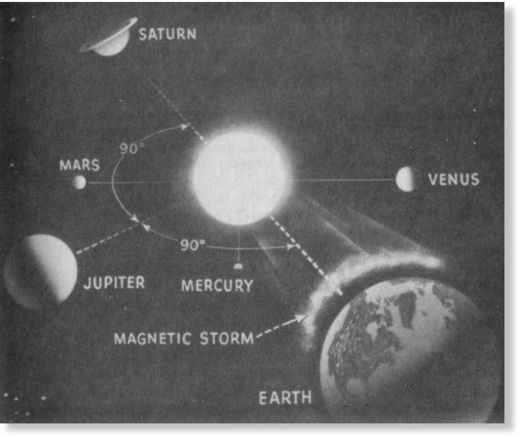

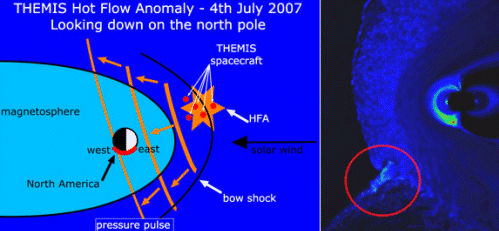

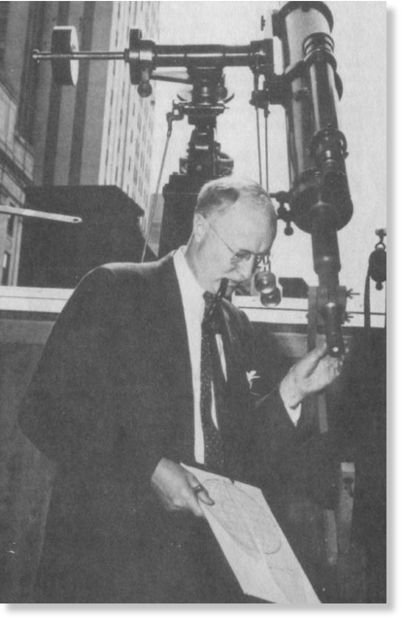
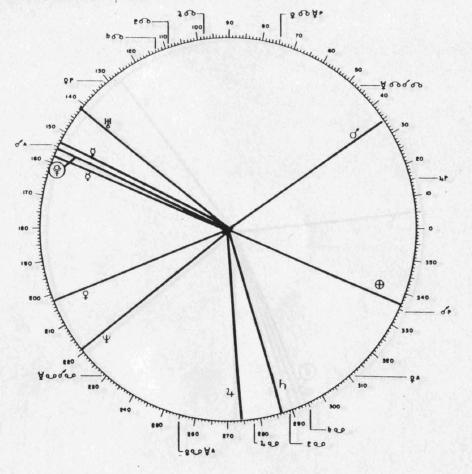
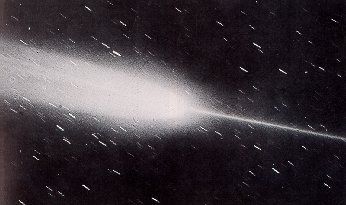
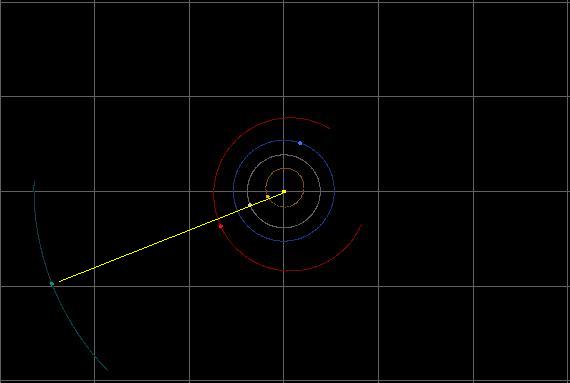



Thank you for sharing this work Ryan, you've connected a few more dots that I've been struggling to get my head around in the past few days. I came across the Themis work in an old National Geographic article titled "Giant Space Tornado's Spark Aurora's on Earth", just yesterday, after reading about the article on site regarding the dipole effect in the creation charged vortex sheath's a day or two beforehand. Naturally I wondered if those giant space tornado's/magnetic ropes were simply a macro form of the same charged sheath vortexes we see in the planetary weather here on Earth, and if so, would they also connect to the outer layers of the solar capacitors positively charged conducting zone (possibly the Oort cloud). I then wondered how this all relates to ongoing charging and discharging effects in the Solar Capacitor and I had thought that planetary alignments would play a large role in cutting off this flow of electrical charge as they passed through these cosmic-scale, charged vortex sheaths. I thought that through this process they would end up being electrically slammed and charged by this excess current which would hence play a role in discharging the overall charge in the solar capacitor in the form of planetary weather and geologic changes (volcano's earthquakes etc). What I hadn't really considered was the causal driving influence of the giant solar magnetic ropes/filaments or solar weather in general and I hadn't thought to look to the planets themselves as being a potential drivers of solar weather and cycles, but it makes a lot of sense.
I haven't read any of Nelsons work before reading about it in this article, but from what has been shared, I would agree that this may be another missing piece of the puzzle that helps to understand and potentially help to predict more accurate windows for electrical activity on a cosmic scale having effects on the Earth. If we factor in other cosmic phenomena such as comet's, the Earth's Moon, and by extension the phases and alignments of the moon's of those planets that are in the harmonic alignments - as they are all likely to have a perceptible/quantifiable effect on the overall phenomena - it may be possible to discern a pattern or signal in the noise and allow a better understanding of exactly what type of discharging phenomena could be expected with particular harmonic alignments, and more importantly an explanation of why and what drives the phenomena. As has been mentioned, it's also likely that action at a distance due to the interaction of other nearby solar systems, stars and particularly energetic cosmic bodies is also playing a role, but I wouldn't know where to start mapping or recording those type of influences or alignments. Fascinating and very insightful work, I think I need to re-read a few times for it all to sink in properly.